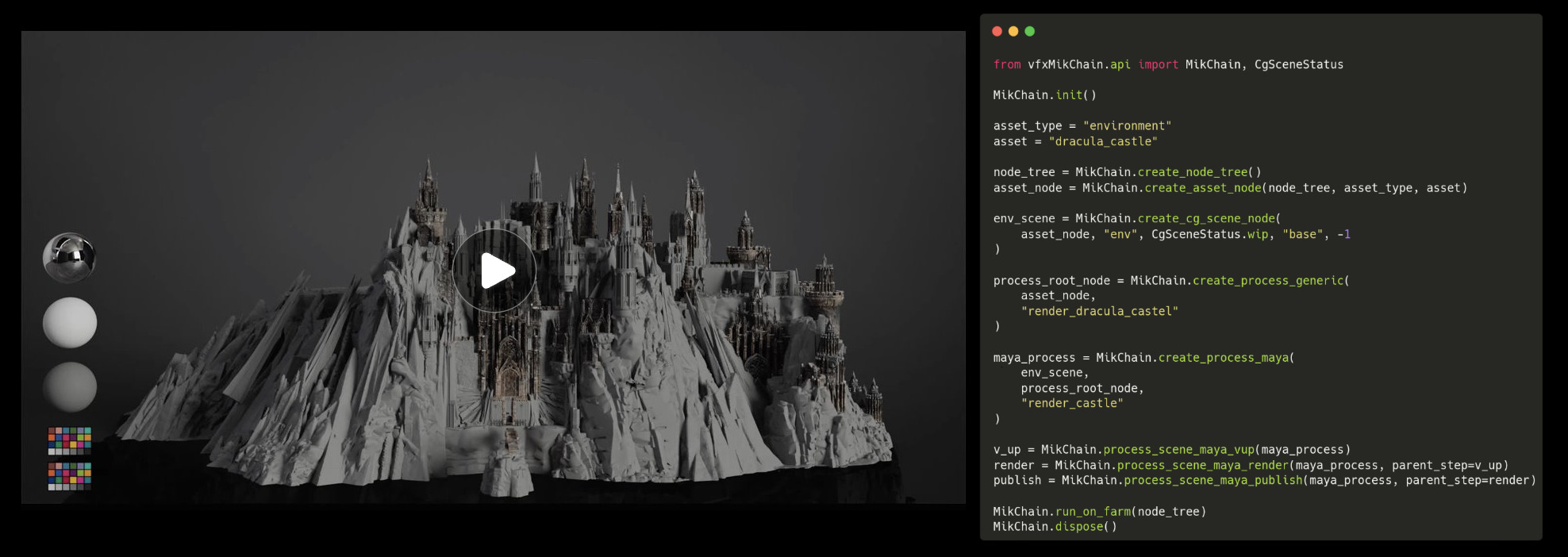Balthazar Sahel (Head of Lighting), Marine Sisnaki (Rigging Lead), along with Romain Pellé and Maxime Cots (Technical Developers), presented their work and insights on MikChain; a node-based tool developed by MPC Paris and The Mill Paris to simplify and speed up production workflows.

Understanding the need: automating to work smarter
As projects scale up and the number of shots keeps growing, VFX teams face a major challenge: saving time on repetitive, technical tasks so they can focus on artistry.
A typical case, raised as early as summer 2023, illustrates this perfectly:
“An asset has changed—I could update all my shots manually, but it would take me all night. I need a tool that does it on the farm, in one click.”
The limits of old tools
Until recently, the go-to solution was writing custom Python scripts. Useful, but often too rigid, these tools had clear drawbacks: they weren’t easily reusable from one production to another, they were tied to a single software (Maya, Houdini, or Nuke), and artists couldn’t really customize them. The result: heavy technical investment, but limited flexibility.
MikChain: a new node-based approach
To overcome these limits, MPC Paris and The Mill Paris created MikChain, a node-based automation tool. The idea: a flexible, modular, reusable system that stays fully integrated into the existing pipeline.
With MikChain:
- Core building blocks (publishing, rendering, reference updates, etc.) are ready to use and easy to combine.
- Artists can edit graphs themselves, giving them more autonomy.
- Multiple software contexts (Maya, Houdini, Nuke) can be chained together.
- Customization is simple without compromising technical robustness.
Real-world use cases: Dracula and Valorant
MikChain has already proven itself on major productions:
- Dracula: A Love Tale directed Luc Besson
→ 150 roto-animation shots retargeted, with up to 23 creatures in a single shot.
→ In three and a half months, just two artists and one TD managed nearly 10,000 farm jobs, meaning as many automated launches of Maya and Nuke.
→ Dozens of nodes created during the process are now permanently integrated into the pipeline. - Valorant (The Mill Paris)
→ Two full-CG films, 120 shots in total.
→ Key challenge: automated ingestion and export of animation scenes delivered by a partner studio.
→ Four nodes developed, three of which are still in use today—handling a flow of 20 shots per hour with just one operator.
More time for creativity
The goal of MikChain is to lift the logistical burden off artists: less time lost on exports, publishing, or format management, and more time dedicated to creative work.
Beyond productivity gains, it reflects a broader ambition: planning production steps more thoughtfully and rethinking old habits to build a pipeline that’s more flexible, sustainable, and ready for the productions of tomorrow.







